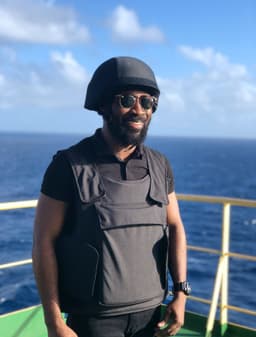
Located In the business hub of Nigeria, Lagos State, Snake Island is home to the largest shipyard or dockyard in the west of Africa, the Nigerdock. Snake Island, an integrated free zoon, is a west African economic development area that is run by Nigerdock. Built on 252 hectares of land, Snake Island stands as a testament to West Africa's maritime ambitions. This island has played a crucial role in shaping the Nigerian maritime industry.
Read our post on the future of Green Sailing.
The Nigerian Federal Government established Nigerdock with funding from the World Bank in 1986. Recognising the need for a robust maritime infrastructure to support its growing economy, the shipyard was initiated. The vision was to create a world-class facility capable of constructing, repairing, and maintaining various types of vessels, from small boats to large cargo ships.
The island's geographical advantage, with access to deep waters and proximity to major shipping routes, made it an ideal location for establishing a shipyard. This strategic positioning was crucial for Nigeria, a country with a burgeoning maritime industry.
The establishment of the shipyard on Snake Island was driven by several factors. Nigeria sought to diversify its economy beyond oil, and the maritime industry presented a lucrative opportunity. A state-of-the-art shipyard would reduce the reliance on foreign facilities for shipbuilding and repairs, keeping more money within the country. The shipyard was expected to create numerous jobs, from skilled engineers and technicians to administrative and support staff, thereby reducing unemployment and stimulating the local economy. With the rise of global trade, having a premier shipyard in Nigeria would enhance the nation's strategic importance in international maritime logistics and commerce.

NSML AND TEMILE DEVELOPMENT COMPANY LIMITED SIGN VESSEL MANAGEMENT AGREEMENT
The 99-Year Lease of the Nigerdock by the Nigerian Federal Government.
Despite its promising start, Snake Island's shipyard faced several challenges in its early years, including financial constraints, management issues, technological limitations, and difficulties in upgrading the shipyard's infrastructure to meet international standards. The lack of modern equipment and facilities hampered their ability to attract significant business. Nigeria's economic fluctuations, driven by global oil price volatility, affected the shipyard's operations. The country's economic instability made it challenging to secure consistent funding and investment. Persistent bureaucratic red tape and regulatory challenges slowed down decision-making processes, delaying critical upgrades and improvements. Emerging shipyards in other West African countries and Asia provided stiff competition, attracting businesses that could have come to Snake Island.
The maritime sector in Nigeria faced security threats, including piracy and vandalism, which deterred potential clients and investors. All these issues led to the Nigerian government awarding a 99-year lease to Nigerdock Nigeria Plc, a leading provider of maritime and offshore engineering services, from 1992 to 2091. In addition to its leasing, Nigerdock was later acquired by the Jagal Group in 2003, a corporation based in Nigeria with a wide range of interests in the energy, maritime, and technological sectors. With Jagal Group serving as its parent business, Nigerdock is still able to operate on its own.leasing the shipyard to private entities with the expertise and resources to fully realise its potential. This move was aimed at revitalising the shipyard through private sector investment, modernising its facilities, and implementing best practices in shipbuilding and repair.
Capacity and Facilities
Snake Island Integrated Free Zone (SIIFZ), where the largest shipyard in West Africa is located, has substantial capacity to handle various maritime activities. The shipyard is equipped with facilities that can accommodate a wide range of vessels, including offshore supply vessels, tankers, and large cargo ships. The shipyard boasts several dry docks and floating docks capable of handling vessels up to 300,000 deadweight tonnage (DWT). It has extensive quay space and state-of-the-art equipment, allowing for the construction, repair, and maintenance of multiple vessels simultaneously. Additionally, the shipyard includes specialized facilities for fabrication, assembly, and offshore construction, supporting the oil and gas industry in the region.

The exact number of ships handled yearly by Snake Island's shipyard can vary based on several factors, including market demand, economic conditions, and specific project requirements. On average, the shipyard has the capacity to service dozens of vessels each year. For instance, it can handle around 50 to 70 ship repair projects annually, depending on the size and complexity of the repairs needed. In terms of new ship construction, the yard can launch several new builds each year, depending on the scale and type of vessels being constructed.
Snake Island, with its grand vision of becoming the largest shipyard in West Africa, faced a tumultuous journey marked by ambitious beginnings, strategic leasing, and formidable challenges. While it has not fully realized its potential, the lessons learned from its experience offer valuable insights for future maritime ventures in the region. Despite its setbacks, Snake Island remains a symbol of Nigeria's maritime aspirations. With renewed focus and strategic investments, there is still hope that it can emerge as a key player in the global maritime industry, contributing to the economic growth and development of West Africa. By understanding the history and challenges of Snake Island, stakeholders in the maritime sector can better navigate the complexities of developing and sustaining world-class shipyards in the region.
